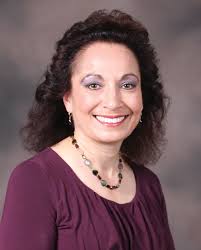By Tim Grayson, Councilman, City of Concord
This year, it seems Californians cannot turn on the news without hearing about another scandal at the University of California.
In August it was the shameful resignation of Chancellor Linda Katehi at UC Davis after she spent $175,000 on “consultants” to eliminate bad press and troubling videos of an incident when campus police pepper sprayed student protesters.
Then her counterpart at UC Berkeley, Nicholas Dirks also resigned after it was discovered that he spent $700,000 of taxpayer dollars on a fence around his official residence.
Months ago, state auditors reported that many qualified students from California were denied entry, while University admissions favored out-of-state students because they pay higher tuition.
Enough is enough. Who is standing up for the taxpayers who are paying for the University system year after year?
Californians are sick and tired of hearing about the excess and greed demonstrated by University of California officials. We are tired of hearing stories about our neighbor’s daughter, the honors student and champion athlete who was denied admission to the Berkeley campus.
We are tired of hearing more about the troubling admissions policies that favor out-of-state students who pay top dollar over exceptional California resident students paying in-state tuition. And we are tired of reports of waste and impropriety from University officials. It has to stop.
The University system has changed over the years.
Many of my neighbors and friends recall a time in our state when the University system made California the great land of opportunity it is today. Hard work at one of our best UC institutions provided access to a job at one of the best companies in the world or acceptance into a competitive medical school. Qualified California students were admitted when they demonstrated their ability to compete and this resulted in prosperity for generations of families across the state who benefited from our exceptional institutions.
Today, things have changed. UC leaders have become greedy. From reports of salaries over $400,000 for executives to blatant preferences for out-of-state or foreign students paying higher tuition rates, the focus on making money has to stop.
Our state leadership needs to help the University reset its compass and focus on goals that will continue to serve generations of Californians to come.
The resignations of two UC Chancellors should begin a fresh start, a time when our state refocused our priorities and set forth a higher standard of conduct for University officials.
State leaders need to set strict policies that ensure University officials are held accountable to admissions standards that honor their obligation to California taxpayers.
In the Assembly, I will stand up for legislation to ensure qualified California students have an opportunity to succeed in one of our top institutions and I will work set policies in place to ensure the University is fully accountable to the public so that taxpayer dollars are spent to benefit students, not University administrators.
Grayson has been a Concord resident since 2001 and was elected to serve on the Concord City Council in November 2010. He served as Redevelopment Agency Chair in 2011 and Vice Mayor in 2013. Grayson was Mayor of Concord from 2013 – 2015.
Read MoreMaria McClain, a math teacher Deer Valley High School in Antioch, and 2015-16 Contra Costa County Teacher of the Year, was honored, recently by President Obama with one of the annual Presidential Awards for Excellence in Mathematics and Science Teaching (PAEMST). It is the highest recognition that a kindergarten through 12th grade mathematics or science (including computer science) teacher may receive for outstanding teaching in the United States. Up to 108 teachers are recognized each year. Since 1983, more than 4,400 teachers have been recognized for their contributions in the classroom and to their profession.
Presidential Awardees receive a certificate signed by the President of the United States, a trip to Washington D.C. to attend a series of recognition events and professional development opportunities, and a $10,000 award from the National Science Foundation.
“I am extremely honored to receive the Presidential Award as recognition of the commitment of mathematics teachers in providing rigorous and relevant curriculum that guarantees equity and access for all students. This award provides me the opportunity and responsibility to continue to advocate for changes in expectations and practices that will increase student engagement and achievement. Receiving this award ensures that my voice will be heard as I continue this work on behalf of all students.”
Maria McClain has been teaching mathematics for the past 28 years, the last 20 of which have been at Deer Valley High School, where she currently teaches Mastering Algebra I, Precalculus, Advanced Placement (AP) Calculus AB, and AP Statistics.
Maria believes in creating a classroom environment which supports and challenges students through the use of instructional strategies designed to promote exploration, critical thinking, and discourse. In her role as Mathematics Department Chair, she supports the transition to the Common Core by facilitating professional development and collaboration opportunities for teachers. She is dedicated to providing access for all students and has worked extensively to eliminate barriers that prevent students from enrolling and achieving in higher level coursework.
Maria has served as a District Mentor Teacher for the past 16 years and is the Lead Teacher of a California Academic Partnership Program grant designed to implement the Common Core and create a seamless transition from high school to post-secondary education. Her awards include Antioch Unified School District and Contra Costa County Teacher of the Year for 2015-16, and California Teacher of the Year Semi-finalist for 2016. She is National Board Certified in adolescent and young adulthood mathematics.
Maria earned a B.A. in mathematics from California State University, Sacramento. She is certified to teach preK–12 and adult mathematics.
For more information about PAEMST, visit https://paemst.org/.
Read MoreContra Costa County’s two 2016-2017 Teachers of the Year (TOY) will be announced at the annual TOY Dinner Celebration, held this Thursday evening, September 22. Two of the four finalists will go on to represent Contra Costa County in the California State Teacher of the Year Program. The county TOY program is presented by the Contra Costa County Office of Education (CCCOE).
More than 400 attendees will be on hand for the dinner, which will be held from 6:00 to 9:00 p.m. at the Hilton Concord Hotel. The assembly will include the 21 celebrated TOYs, plus numerous educators (K-college), business executives (sponsors), local government, and local political representatives. The evening’s entertainment will be provided by the Hillview Junior High (Pittsburg) Jazz Band, directed by Diane Klaczynski. Contra Costa County Superintendent of Schools Karen Sakata will serve as master of ceremonies. Each of the three finalists, who will be introduced by a former student, will give an inspiring five-minute speech. (The same speech as they gave at the TOY Speech Presentation in late August.) The evening will conclude in excitement and anticipation, with the announcement of the two 2016-2017 Contra Costa County Teachers of the Year.
After being named Teacher of the Year by their respective Contra Costa County school districts, then passing a rigorous application screening, followed by a panel classroom observation and interview, and concluding with a speech presentation, two of these four finalists will be selected to represent Contra Costa County as its 2016-2017 Teachers of the Year:
This year’s two Contra Costa County TOYs will join the long list of other finalists, dating back to the 1972-1973 school year. Along with the four finalists, this year’s other 17 TOY candidates will also be honored at this event (for complete list below).
Finalists:
Shauna Hawes teaches computer applications/technology to grades 6-8 at Valley View Middle School, in Pleasant Hill. The 18-year teacher has been with the Mt. Diablo Unified School District during her entire teaching career. Prior to her current position, Hawes taught 6th grade core (English, history, and reading) at Valley View. Before coming to Valley View, she taught 5th grade (all subjects) at Hidden Valley Elementary, in Martinez, from 1998-2007.
Gina Minder-Maldonado has recently begun her 26th year of teaching. For the past 18 years, Minder-Maldonado has taught at Oakley Elementary School, in Oakley. Currently teaching 2nd grade, Minder-Maldonado’s former teaching experience includes preschool through 5th, as well as adult education.
Summer Rodriguez has commenced her 17th year as an educator for Liberty High School, in Brentwood. Rodriguez has taught all levels of high school English, AP English language and composition, and AP English literature and composition. In addition to her education duties, she has served as director of the school’s student activities through its Student Leadership Program.
Joyce Rooks began her career in teaching after serving as a senior programmer analyst/senior systems analyst for Mervyns, as well as an independent computer-training consultant. This year, Rooks has begunher 14th year teaching for the San Ramon Valley Unified School District, where she has served as an instructor for Dougherty Valley High, California High, and Coyote Creek Elementary. She has been teaching first and second grades for the past five years at Creekside Elementary, in Danville.
2016-2017 Contra Costa County Teacher of the Year Representatives:
Jamie Cackler Bennetts, Knightsen Elementary School District, Knightsen Elementary
Cynthia Boyko, Acalanes Union High School District, Miramonte High
Rachael Byron, San Ramon Valley Unified School District, Dougherty Valley High
Erin Dinday, Martinez Unified School District, Alhambra High
Krystal Figaroa, Pittsburg Unified School District, Stoneman Elementary
Daniel Yoshio Haley, Mt. Diablo Unified School District, El Dorado Middle
Shauna Hawes, Mt. Diablo Unified School District, Valley View Middle
Judy Jernigan, Lafayette School District, Lafayette SD Schools
Kristyn Loy, West Contra Costa Unified School District, Stewart Elementary
Judy Mazur, Walnut Creek School District, Buena Vista Elementary
Vicki McGuire, Antioch Unified School District, Sutter Elementary
Aminta Mickles, Contra Costa Community College District, Contra Costa College
Gina Minder-Maldonado, Oakley Union Elementary School District, Oakley Elementary
Dayle Okamitsu, Orinda Union School District, Wagner Ranch Elementary
Lawrence Pang, West Contra Costa Unified School District, El Cerrito High
Deborah Guillén Rocchild, John Swett Unified School District, John Swett High
Summer Rodriguez, Liberty Union High School District, Liberty High
Joyce Rooks, San Ramon Valley Unified School District, Creekside Elementary
Juliet Simens, Brentwood Union School District, Pioneer Elementary
Angela Taylor, Contra Costa County Office of Education, Parole Education Program Oakland Computerized Literacy Learning Center
Sarah Vieira, Byron Union School District, Timber Point Elementary
Note regarding eligible participants:
Sixteen of the eighteen Contra Costa County school districts, as well as the CCCOE are participating in this year’s TOY program.
Each year, one instructor from Contra Costa Community College District is submitted to the TOY program for his/her outstanding body of work with their designated college. The colleges rotate each year between Diablo Valley, Los Medanos, and Contra Costa. (These instructors do not compete in the State Teacher of the Year competition.) This year is Contra Costa College’s turn.
Due to the larger number of students and teachers in their districts, West Contra Costa USD, Mt. Diablo USD, and San Ramon Valley USD are allowed to submit two TOY candidates.
Follow Contra Costa County’s Teacher of the Year program on Twitter: #cocotoy
Read MoreNeed for civic-minded citizens to help throughout the county in November
Kelly Davis and her fellow Contra Costa volunteers have an early wake-up call on Election Day, but most of them don’t mind the long hours.
Each of them has their own unique reasons for being poll workers. And the Contra Costa County Elections Division is looking for civic-minded men and women to join them on our Election Day Team.
Davis, of Orinda, is motivated to get out of bed on Election Day and stay energized throughout the day to raise money for foster children.
Monnie Segelke of Danville and Maude DiVictor of Richmond both find helping voters fulfilling and they enjoy seeing neighbors and familiar faces at their polling places.
Julie Southern of Antioch, like several volunteers, grew up in families who emphasized civic participation.
“I enjoy being involved in the democratic process, and there’s no better way than being a poll worker because you’re involved in the nitty-gritty,” Southern said. “I can say I’m a part of history.”
The November 2016 election will be an historic one as a new President and state Senator are elected. Voter turnout is anticipated to be the highest it has been in years.
As a result, Contra Costa Elections has more opportunities for volunteers to be poll workers than in years past.
No prior experience is necessary and training is provided. Poll workers receive a stipend for their service, which includes attending a mandatory two-hour training and working 6:00 am to 9:00 pm on Election Day.
Participants receive a special pin denoting their service. Serving as a poll worker does not have any bearing on Social Security or unemployment status, according to State law.
County and State employees are encouraged to apply.
Bilingual citizens are strongly encouraged to volunteer. High School students who are at least 16 and have a grade point average of 2.5 or above may serve as poll workers. Student poll workers will receive a stipend and may fulfill community service requirements.
For more information, visit www.cocovote.us or text “cocoteam” to 28683.
Those who might be interested should email eo@vote.cccounty.us or call the Elections Division at (925) 335-7800, option 1.
Read MoreAssemblywoman Catharine Baker (R-San Ramon) announced, last week, that Governor Brown signed her bill, AB 1399, legislation increasing available resources for programs serving victims of domestic violence.
Programs helping victims of domestic violence provide essential, life-saving services to victims and their children. These programs have faced a significant funding shortfall in recent years. AB 1399 will help direct much-needed funding support for these programs through a donation option on California tax returns to the California Domestic Violence Fund. Tax filers can check off a box on their tax returns to contribute their own private funds in excess of their tax liability to organizations supporting victims of domestic violence.
“An increasing need for domestic violence programs throughout California has been met with a decrease in funding for these programs—leaving thousands of children and families without the support they need,” said Assemblywoman Baker. “Government can’t and shouldn’t do it all. AB 1399 efficiently increases the availability of vital resources by providing Californians with the opportunity to contribute to life-saving domestic violence programs.”
On just a single day in 2014, 1,216 requests for services from domestic violence victims went unmet in California, leaving thousands of individuals, children, and families without a safe place to stay or access to vital counseling and resources. Of those unmet needs, approximately 49% of programs report that victims return to their abuser, 37% report that victims become homeless, and 16% report that families end up living in their car.
AB 1399 received unanimous bipartisan support in both the Assembly and the Senate prior to being signed by the Governor.
Baker’s bill is supported by the Contra Costa District Attorney’s Office, the Contra Costa County Board of Supervisors, California Partnership to End Domestic Violence, the Center for Domestic Peace, the Alliance for Community Transformations, the Center for Community Solutions, Safe Alternatives to Violent Environments-SAVE, the California Coalition Against Sexual Assault, and Junior Leagues of California.
Baker represents the 16th Assembly District, which includes the communities of Alamo, Danville, Dublin, Lafayette, Livermore, Moraga, Orinda, Pleasanton, San Ramon, and Walnut Creek.
Read MoreThe Contra Costa County District Attorney’s Office has received many requests from the media for comments concerning the scandal involving police officers and sheriff’s deputies from throughout the Bay Area. At the center of these allegations is a young woman who alleges she had had sexual encounters with up to 30 local law enforcement officers, and that some of these encounters occurred when she was 17 years of age.
Recently, we’ve been made aware of additional allegations of possible criminal conduct here in Contra Costa County. We’ve been working collaboratively with our law enforcement partners, and we are reviewing that evidence and those allegations. However, we have not yet completed our own investigation into this matter.
District Attorney Peterson stated “It goes without saying that our office will always investigate any alleged sexual assault or human trafficking crimes that occur within our county, and we’re committed to holding anyone who committed such crimes in Contra Costa County accountable for their actions.”
Read More
Saturday morning, September 17, 2016 at about 4:32 a.m., Deputy Sheriffs were dispatched to a shooting on the first block of Bay Drive in Bay Point.
Upon arrival Deputies found a 20-year-old Bay Point man in a vehicle. He was suffering from gunshot wounds. He was later pronounced deceased on scene by the fire department. The victim is not being identified at this time.
The investigation into this homicide is ongoing.
Anyone with any information on this case is asked to contact the Office of the Sheriff at (925) 646-2441. For any tips, please email: tips@so.cccounty.us or call 866-846-3592 to leave an anonymous voice message.
Read More
Former Moraga Mayor and candidate for District 3 BART Director, Ken Chew – endorsed by over 50 public officials, community leaders and business owners – has added two more leaders to his endorsement list.
With the addition of Candace Andersen, Contra Costa County Supervisor, District 2, and Federal Glover, Contra Costa County Supervisor, District 5, four out of the five Contra Costa County Supervisors have endorsed Ken Chew for District 3 BART Board.
“Ken will be a great representative on the BART Board for District 3 to begin the necessary reform,” said Supervisor Anderson. “He is a fiscal conservative and a champion for transparency and accountability in government. He has the expertise as a transportation professional and public policy leadership experience to be our BART Director.”
Contra Costa County District Attorney Mark Peterson, has also endorsed Chew.
“As an elected official, Ken has served with honesty and integrity,” Peterson said. “I respect his independence in making tough decisions to protect the tax payers and the community he represents. A fine example of a true leader.”
In response, Ken Chew said, “I am honored and humbled by their endorsements. Now I have an important mission to complete, that is, to help bring real improvements to our beloved BART system. By holding ourselves, the BART Board and Management fiscally responsible and accountable, we will make BART safe, clean and have trains that run on-time.”
Chew was elected to the Moraga Town Council in November 2006, and re-elected to a second term in November 2010. He also served as Mayor in 2010 and 2014. During his terms, he insisted on and achieved a balanced budget for Moraga from 2006 to 2014. As a member of the Board of Directors representing Moraga, he negotiated and awarded a new 10 year, $500 million contract in 2014 for the Joint Powers Authority of RecycleSmart (Central Contra Costa Solid Waste Authority). In 2012, with the help of many community leaders, he jointly initiated a successful Moraga Measure K, the 1% sales tax in Moraga for infrastructure (street and storm drains) maintenance and renewal.
District 3 includes the following BART Stations: Bay Fair, Downtown Berkeley, El Cerrito del Norte, El Cerrito Plaza, North Berkeley, Orinda, Rockridge, San Leandro; and all or portions of the following cities and communities: Albany, Ashland, Berkeley, Castro Valley, Cherryland, El Cerrito, Kensington, Lafayette, Moraga, Oakland, Orinda, Piedmont, San Lorenzo See map of District 3, here: www.bart.gov/sites/default/files/docs/bart_3.pdf
For more information about Chew’s campaign visit www.electkenchew.com.
Read MoreSacramento, CA – On Wednesday, September 14, Governor Brown signed into law AB 326 by Assemblymember Jim Frazier (D – Oakley), which sets a 30-day deadline that the Department of Industrial Relations (DIR) must reimburse a collateral deposit by an employer in a Division of Labor Standards Enforcement prevailing wage dispute.
“I applaud the Governor for signing AB 326 to bring fairness to the prevailing wage dispute process,” said Frazier. “As a former general contractor, I know first-hand that tying up cash can place innocent employers in jeopardy of losing their business or creating financial hardship.”
Current law requires that in cases where a contractor has been accused of prevailing wage violations, the contractor must post a cash deposit with the DIR equivalent to the full amount of the assessment plus penalties. AB 326 would ensure that the contractor is reimbursed in a timely manner.
“We cannot thank Assemblymember Frazier enough for stepping up on this issue,” said Tom Holsman, CEO of the Associated General Contractors of California. “There have been instances when contractors have not received their cash deposits back for months, even though a settlement had been arrived at, or the contractor had been fully exonerated.”
AB 326 had the support of the Associated General Contractors of California and San Diego, Associated Builders & Contractors of California, Construction Employers’ Association, Southern California Contractors Association, and California Association of Specialty Contractors. This bill passed through the Legislature with widespread bipartisan support and will become effective on January 1, 2017.
Assemblymember Frazier represents the 11th Assembly District, which includes the communities of Antioch, Bethel Island, Birds Landing, Brentwood, Byron, Collinsville, Discovery Bay, Fairfield, Isleton, Knightsen, Locke, Oakley, Pittsburg (partial), Rio Vista, Suisun City, Travis AFB, Vacaville and Walnut Grove.
Read More
Contra Costa County Sheriff’s Detectives are continuing to investigate Monday’s shooting of two men on the 600 block of El Centro in El Sobrante. The victims, ages 37 and 19, are still in the hospital in stable condition. Detectives on Monday arrested 32-year-old Jason Ellis of El Sobrante in connection with this shooting. He was booked into the Martinez Detention Facility on two counts of assault with a firearm. He is being held in lieu of $100,000 bail.
Anyone with any information on this case is asked to contact the Investigation Division at (925) 313-2600. For any tips, please email: tips@so.cccounty.us or call 866-846-3592 to leave an anonymous voice message.
Read More



















